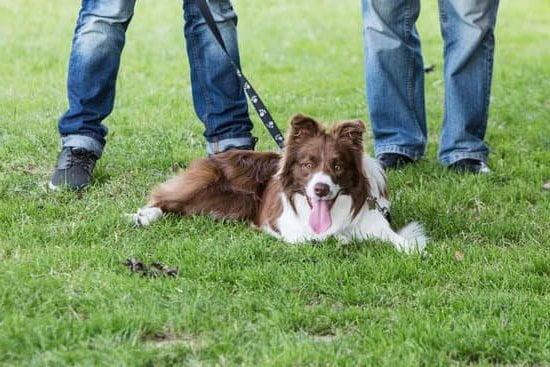Are you considering crate training for your dog? Do you want to understand the purpose and benefits of this training method? In this article, we will explore the ins and outs of dog crate training, from understanding its purpose to transitioning your dog to independence. Whether you’re a new pet owner or looking to improve your canine companion’s behavior, crate training can be a valuable tool in your arsenal.
Crate training is a popular method used by many dog owners to house train their pets, manage behavior issues, and provide a safe space for their furry friends. Understanding the purpose behind crate training is essential for successful implementation. We’ll delve into the reasons why dog crate training can be beneficial for both dogs and their owners, as well as how it can contribute to a harmonious relationship between pet and owner.
In addition to discussing the purpose of dog crate training, we will cover important topics such as choosing the right crate for your dog, introducing crate training, acclimating your dog to the crate, and using positive reinforcement techniques. We’ll also address common challenges that may arise during the training process and provide tips on how to overcome them. Whether you have a puppy or an adult dog, this article will offer valuable insights into crate training and its benefits.
Choosing the Right Dog Crate
When it comes to crate training your dog, choosing the right dog crate is crucial for the success of the training. The right crate will provide a safe and comfortable space for your dog while also being an effective tool for behavior modification. Here are some factors to consider when choosing the right dog crate:
1. Size: The crate should be large enough for your dog to stand up, turn around, and lie down comfortably. However, it shouldn’t be too big that it allows your dog to use one end as a bathroom.
2. Material: Dog crates come in various materials such as wire, plastic, and fabric. Consider the durability, ventilation, and visibility of each material to determine which is best for your dog’s needs.
3. Portability: If you plan to travel with your dog or need to move the crate around frequently, consider a lightweight and portable option.
4. Design: Some dogs may feel more secure in an enclosed den-like environment, while others may prefer a more open wire-style crate. Consider your dog’s comfort level when choosing the design of the crate.
5. Additional Features: Some crates come with features such as removable trays for easy cleaning, divider panels for adjusting the size as your puppy grows, and built-in handles for easy transportation.
By considering these factors when choosing a dog crate trainer, you can ensure that you provide your dog with a safe and comfortable space for their crate training journey. It’s important to take into account your specific needs including lifestyle considerations so that both you and pup can find ease during training sessions daily.
Introduction to Crate Training
Crate training is an important aspect of dog ownership, as it provides a safe and comfortable space for your dog while also helping with behavior and obedience training. The purpose of crate training is to give your dog a designated area that serves as their den, where they can feel secure and relaxed. It can also be used for housebreaking, managing behavior problems, and providing a safe haven for the dog when needed.
When choosing the right dog crate for your pet, take into consideration the size of your dog and their specific needs. The crate should be large enough for the dog to stand up, turn around, and lie down comfortably. There are different types of crates available, such as wire crates, plastic crates, and soft-sided crates, so make sure to choose one that suits your dog’s temperament and behavior.
To introduce your dog to the crate, start by placing it in an area where the family spends time so that the dog can get accustomed to its presence. Introduce the crate gradually by leaving its door open, placing treats inside to encourage exploration, and using positive reinforcement techniques.
It’s important not to force the dog into the crate or use it as a form of punishment. This will help create a positive association with the crate and make it more appealing to your pet.
Overall, understanding the purpose of crate training and implementing positive reinforcement techniques are essential for successful crate training. With patience and consistency, dogs can learn to see their crate as a safe haven rather than confinement. A well-trained dog will then be able to enjoy the benefits of having their own den while providing peace of mind for their owners.
Getting Your Dog Acclimated to the Crate
When it comes to crate training your dog, getting them acclimated to the crate is a crucial step in the process. The goal is for your dog to see the crate as a safe and comfortable space, rather than a place of punishment. This can take time and patience, but with the right approach, your dog can learn to love their crate.
One effective way to get your dog acclimated to the crate is by making it a positive and rewarding experience for them. Start by placing the crate in an area of the house where your family spends a lot of time, such as the living room. Leave the door open and encourage your dog to explore the crate on their own terms. You can also place some treats or their favorite toys inside to lure them in.
Consistency is key when acclimating your dog to the crate. Encourage them to enter the crate throughout the day and praise them whenever they do so without any hesitation or fear. Over time, gradually increase the amount of time they spend inside the crate with the door closed, always providing positive reinforcement when they remain calm and relaxed.
It’s important to remember that every dog is different, so be patient and understanding as you work through this process with your furry friend. By using positive reinforcement techniques and being consistent in your approach, you can help your dog see their crate as a comfortable and secure space. With time and practice, they will learn to enjoy spending time in their crate.
| Aspect | Acclimating Your Dog to Their Crate |
|---|---|
| Key Tip | Use positive reinforcement techniques |
| Location | Place crate in a room where family spends most time. |
| Persistence | Consistently encourage dog to enter crate throughout day. |
Using Positive Reinforcement Techniques for Crate Training
Positive reinforcement is a crucial component of crate training for dogs. By using positive reinforcement techniques, you can encourage your dog to view the crate as a safe and comfortable space rather than a punishment. Positive reinforcement involves rewarding your dog for exhibiting the desired behavior, such as willingly entering the crate, staying calm inside, and not whining or barking excessively.
One effective positive reinforcement technique is offering treats to entice your dog into the crate. Start by leaving the door open and placing treats inside the crate to create a positive association with the space. As your dog becomes more comfortable, you can start giving treats only when they voluntarily enter the crate. It’s important to use high-value treats that your dog finds especially enticing to maximize their motivation to enter the crate.
In addition to treats, offering praise and affection can also be powerful forms of positive reinforcement during crate training. When your dog willingly enters the crate or remains calm inside, offer verbal praise and gentle petting to reinforce their good behavior.
This will help them understand that being in the crate leads to positive experiences and rewards, further encouraging them to view it positively. Consistency in using positive reinforcement techniques is key to effectively crate training your dog and helping them associate the crate with safety and comfort.
Common Challenges and How to Overcome Them
Crate training your dog can be a valuable tool for both you and your furry friend, but it’s not without its challenges. Here are some common difficulties that pet owners may encounter when crate training their dogs, along with tips on how to overcome them:
1. Whining and Barking: One of the most common challenges in crate training is dealing with whining and barking when your dog is in the crate. This behavior can be distressing for both the dog and the owner, but patience and consistency are key to overcoming this challenge.
Make sure to never let your dog out of the crate while they are whining or barking, as this will reinforce the behavior. Instead, wait for a moment of silence before opening the crate and gradually extend the duration of quietness before letting them out.
2. Fear or Anxiety: Some dogs may exhibit fear or anxiety when being introduced to a crate, especially if they have had negative experiences with confinement in the past. To help your dog overcome this challenge, start by making the crate a positive and comfortable space by placing treats, toys, and comfortable bedding inside. You can also try leaving the door open initially so that your dog can explore the crate at their own pace.
3. Accidents in the Crate: Accidents in the crate can be frustrating for pet owners, but it’s important not to scold or punish your dog for these incidents as it could create a negative association with the crate.
Instead, make sure to thoroughly clean the crate after an accident using an enzymatic cleaner to remove any lingering odors that might encourage repeat occurrences. Additionally, make sure that you are taking your dog outside regularly to eliminate any opportunities for accidents inside their crate.
By being aware of these challenges and implementing some strategies to overcome them, you can help make the process of crate training a more positive experience for both you and your canine companion.
Crate Training for Puppies vs Adult Dogs
When it comes to crate training, the approach for puppies versus adult dogs can be quite different. In this section, we will explore the key differences in crate training for these two age groups and provide tips for successful training.
Crate Training Puppies
Puppies are more adaptable and moldable compared to adult dogs, making crate training a bit easier in some cases. However, it is important to remember that puppies also have a shorter attention span and may require more frequent potty breaks.
When crate training a puppy, it is essential to start with short sessions and gradually increase the duration as they become more comfortable. Using positive reinforcement techniques such as treats and praise can help create a positive association with the crate.
Crate Training Adult Dogs
Crate training an adult dog may present some challenges, especially if they have never been introduced to a crate before. It is crucial to take things slow and not force the dog into the crate. Instead, let them explore it at their own pace and use treats to encourage them to go inside.
For adult dogs, it may take longer for them to get used to the crate, so patience is key. It is also important to make the crate a comfortable and enjoyable space for them by adding their favorite toys or blankets.
Regardless of whether you are crate training a puppy or an adult dog, consistency is key. It is also important to ensure that the crate is an appropriate size for your pet, providing enough room for movement without being too large. With patience and positive reinforcement, both puppies and adult dogs can successfully be trained using a dog crate trainer method.
The Benefits of Crate Training for Both Dogs and Owners
Crate training offers numerous benefits for both dogs and their owners. For dogs, a properly introduced and utilized dog crate can provide a safe haven and a sense of security. It can also serve as a tool for managing behavior and helping with potty training. For owners, crate training can offer peace of mind knowing their dog is safe when unsupervised, prevent destructive behavior, and ease travel or vet visits.
One of the primary benefits of crate training for dogs is that it allows them to have their own space within the home. This can be especially beneficial for dogs who may feel overwhelmed or anxious in new surroundings. Having a designated area where they feel secure can help reduce stress and anxiety, resulting in a happier and more well-adjusted pet.
Additionally, crate training can aid in preventing destructive behavior when left alone. Dogs who are not properly trained on how to behave when home alone may resort to chewing furniture, shoes, or other household items out of anxiety or boredom. A dog crate trainer teaches the dog appropriate behavior when left alone, which is essential for both the well-being of the dog and the preservation of household items.
Another advantage of crate training is its usefulness during travel or vet visits. Dogs who are accustomed to being crated at home will likely find comfort in having a familiar space when staying in a different environment such as a hotel room or visiting the veterinarian’s office. This can also make it easier for owners to manage their dogs in these situations, minimizing stress for both parties involved.
How to Transition From Crate Training to Independence
After successfully crate training your dog, it is important to understand how to smoothly transition from the crate to independence. This process involves gradually increasing your pet’s freedom within the house while maintaining good behavior. It’s essential to remember that this transition should be done gradually and patiently in order to avoid any setbacks in your dog’s training process.
One of the first steps in transitioning from crate training to independence is allowing your dog some supervised time outside of the crate. Start by letting them explore a specific area of the house for short periods, eventually increasing their freedom as they demonstrate good behavior. It is important to closely monitor them during these early stages and ensure that they do not engage in any unwanted behaviors.
As you continue with the transition process, it is crucial to reinforce positive behavior and set clear boundaries for your dog. Continue using positive reinforcement techniques such as treats and praise when they exhibit appropriate behavior outside of the crate. Additionally, continue practicing obedience commands and reinforcing good manners to help solidify their understanding of expected behavior outside the crate.
In conclusion, transitioning from crate training to independence requires patience, consistency, and ongoing positive reinforcement. By following a gradual approach and maintaining a watchful eye on your pet’s behavior, you can ensure a smooth transition that leads to a well-behaved and independent dog. Remember that each dog may progress at its own pace, so it’s important to tailor the transition process based on your pet’s individual needs and capabilities.
Frequently Asked Questions
Is It Good for a Dog to Be Crate Trained?
Crate training can be beneficial for dogs as it provides them with a safe and secure space. It can also aid in potty training and preventing destructive behaviors. However, it’s important to ensure that the crate is not used as a form of punishment.
How Long Does It Take to Crate Train a Dog?
The time it takes to crate train a dog can vary depending on the dog’s age, temperament, and past experiences with crates. Some dogs may become comfortable with the crate within a few days, while others may take weeks or even months to adjust. Consistency and positive reinforcement are key factors in successful crate training.
What Age Should You Crate Train a Dog?
It is generally recommended to start crate training a dog when they are still puppies. Puppies are more adaptable and can learn new behaviors more quickly than older dogs.
That being said, adult dogs can also be successfully crate trained, but it may take longer for them to get accustomed to the crate compared to puppies. Ultimately, the best age to start crate training will depend on the individual dog’s needs and circumstances.

Welcome to the blog! I am a professional dog trainer and have been working with dogs for many years. In this blog, I will be discussing various topics related to dog training, including tips, tricks, and advice. I hope you find this information helpful and informative. Thanks for reading!





